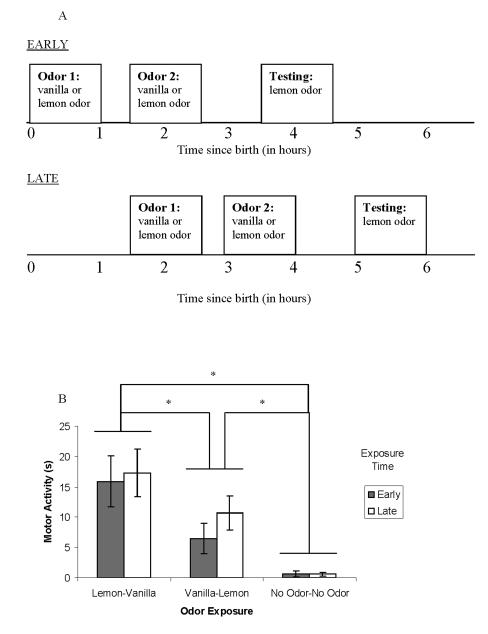Figure 2.
Dissociating the effects of timing and order of odor exposure in the neonate rat. a, Schematic of odor exposure and testing for Experiment 2. Newborn pups were exposed to vanilla odor followed by lemon odor, lemon odor followed by vanilla odor, or received no odor exposure. This resulted in three odor exposure groups: vanilla-lemon, lemon-vanilla, and no odor-no odor (not pictured). These odor exposures occurred early (beginning immediately after birth) or late (beginning 90 minutes after birth). Testing with lemon odor followed an hour after the last odor exposure. b, Mean ± SE duration of motor activity scores (in seconds) measured during testing in the presence of lemon odor after one of three odor exposures (lemon-vanilla, vanilla-lemon, and no odor-no odor), which occurred either early or late. Although early and late groups never differ within an Odor Exposure condition, each Odor Exposure condition differs from one another. * indicates p < .05

